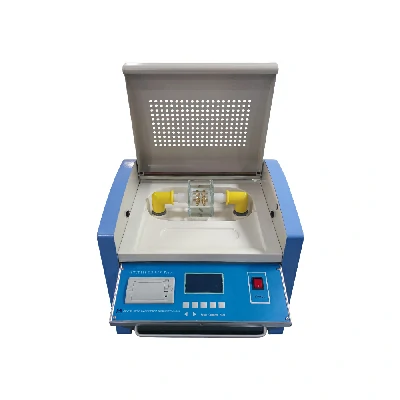Moisture can have a significant impact on the results obtained from high voltage breakdown testing, which is used to assess the insulation integrity of electrical components and systems.
Here’s how moisture affects high voltage breakdown tester results:
- Reduced Dielectric Strength: Moisture acts as a conductor and reduces the effective dielectric strength of the insulation material. When subjected to high voltage stress during testing, the presence of moisture can facilitate the formation of conductive paths or partial discharges within the insulation. This can lead to premature breakdown of the insulation and lower breakdown voltage readings than would be expected in dry conditions.
- Increased Leakage Current: Moisture in the insulation can increase the leakage current flowing through the material. This increased leakage current can distort the voltage-current relationship observed during breakdown testing, making it difficult to accurately determine the breakdown voltage threshold. The presence of moisture can also contribute to the initiation and propagation of partial discharges, further affecting the test results.
- Surface Tracking and Arcing: Moisture on the surface of the insulation can promote surface tracking and arcing during high voltage testing. Surface tracking occurs when moisture forms a conductive path across the surface of the insulation, high voltage breakdown tester leading to localized breakdown and potential damage. Arcing can occur when moisture creates a low-resistance path for electrical discharge, resulting in visible sparks or flashovers that interfere with the testing process.
- Insulation Degradation: Prolonged exposure to moisture can degrade the insulation material over time, reducing its dielectric properties and overall effectiveness. High voltage breakdown testing conducted on moisture-affected insulation may yield lower breakdown voltage readings or inconsistent results due to the compromised condition of the insulation.
- Erroneous Readings: Moisture-induced effects such as surface tracking, arcing, and increased leakage current can produce erroneous readings or false indications of insulation breakdown during testing. These misleading readings may lead to incorrect assessments of insulation integrity and potentially overlook underlying issues or weaknesses in the electrical system.
- Safety Concerns: Moisture in the testing environment can pose safety hazards to personnel conducting high voltage breakdown testing. Increased risk of electrical shock, equipment malfunction, or short-circuiting may occur in the presence of moisture, necessitating additional safety precautions and risk mitigation measures.
Overall, moisture can adversely affect high voltage breakdown tester results by reducing dielectric strength, increasing leakage current, promoting surface tracking and arcing, contributing to insulation degradation, producing erroneous readings, and posing safety concerns. Proper moisture management and insulation condition assessment are essential for ensuring accurate and reliable breakdown testing of electrical components and systems.

